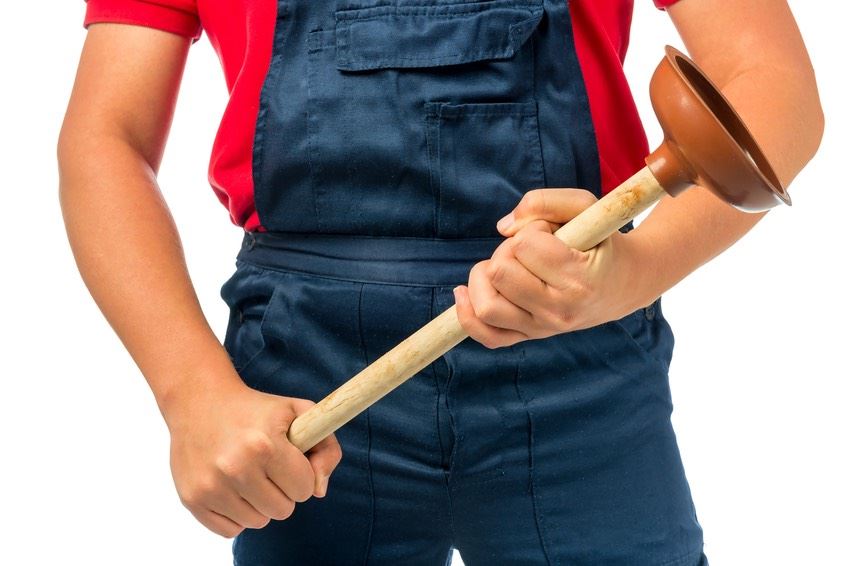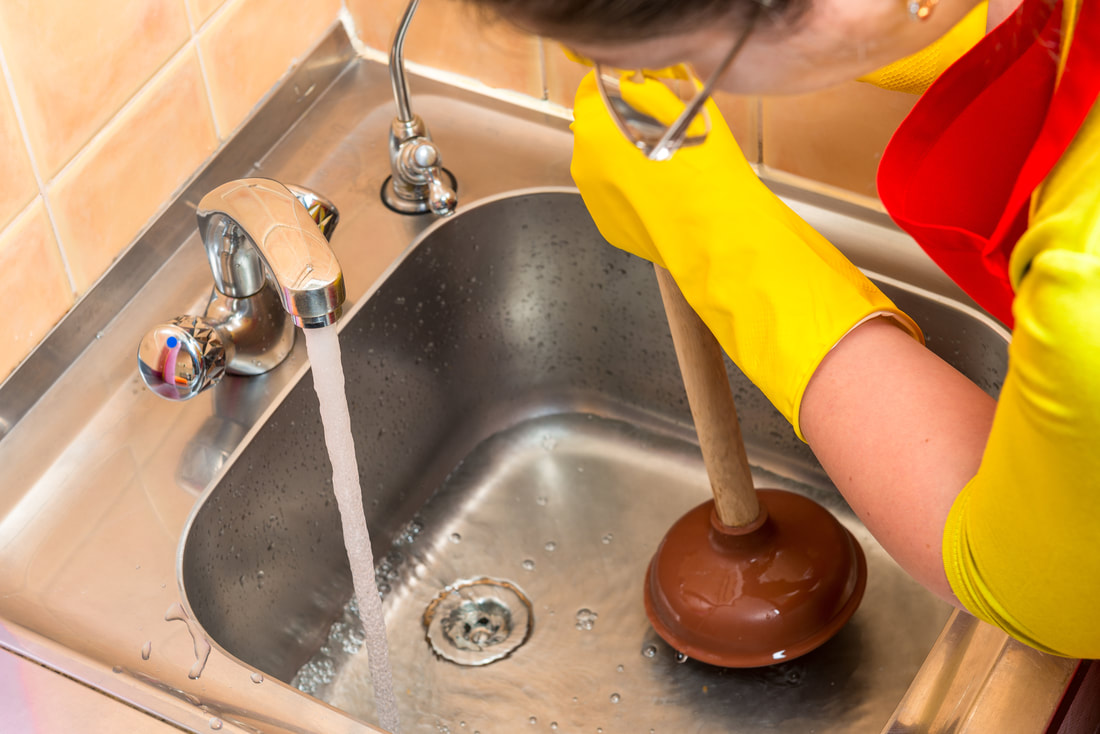Do you find yourself hunting for critical information around A Guide to Plungers (and How to Use Them)?

Intro
Appropriate upkeep of home drains pipes is important for stopping clogs and ensuring smooth water circulation. Among the trick tools in every house owner's toolkit is the plunger, along with different drainpipe cleansers created to tackle stubborn blockages efficiently. This short article discovers exactly how to make use of bettors and drainpipe cleansers effectively to maintain your drains pipes moving openly.
Area 1: Recognizing Bettors
Kinds of Plungers
There are several types of bettors readily available, each created for different types of drains pipes and blocks. The most usual types include mug plungers, flange plungers, and accordion bettors.
How Plungers Job
Plungers work with the concept of creating stress and suction to dislodge obstructions. When correctly used over a drain, they produce a vacuum that can pull out particles or break up clogs.
Choosing the Right Plunger
Picking the right plunger relies on the type of drain and the nature of the blockage. Mug bettors are suitable for sinks and tubs, while flange bettors are much better fit for commodes due to their style.
Usual Blunders with Plungers
Preventing these blunders makes certain reliable plunging: inappropriate seal around the drainpipe, insufficient pressure, and unclear surrounding particles.
Area 2: Making Use Of Plungers Properly
Prep work
Prior to plunging, guarantee the plunger covers the drain entirely and develops a tight seal. Clear any noticeable particles around the drain opening.
Strategy
Begin with gentle diving movements to develop suction. Rise stress gradually, making use of a consistent rhythm. Repeat as necessary till the drain gets rid of.
Fixing Tips
If plunging does not function, try adjusting the seal, using petroleum jelly for a better seal, or making use of a various type of bettor.
Section 3: Understanding Drainpipe Cleaners
Sorts Of Drain Cleaning Company
Drain pipes cleaners can be chemical or chemical. Chemical cleansers utilize strong chemicals to dissolve obstructions, while enzymatic cleansers use natural enzymes to break down organic matter.
How Drainpipe Cleansers Job
Chemical cleaners react with blockages to dissolve them, while chemical cleaners break down organic materials like hair and grease without hurting pipelines.
Safety and security Factors to consider
Always use gloves and eye defense when using chemical drainpipe cleaners. Make sure adequate ventilation and follow producer directions meticulously.
Eco-Friendly Alternatives
Consider using vinegar and baking soda or enzyme-based cleansers for environmentally friendly options that are safer for pipes and the setting.
Area 4: Utilizing Drain Cleaners Effectively
Application Strategies
Put chemical cleaners directly right into the drainpipe opening. Allow them to benefit the suggested time before purging with hot water. Enzymatic cleansers ought to rest overnight.
Precautions
Stay clear of mixing various types of cleansers, as this can produce poisonous fumes. Never make use of chemical cleaners combined with a plunger, as spilling can take place.
Dealing With Persistent Clogs
For consistent obstructions, consider utilizing a pipes serpent or calling a professional plumbing to stop damages to pipelines.
Conclusion
To conclude, understanding just how to use plungers and drainpipe cleansers effectively is crucial for keeping healthy and balanced plumbing systems. By selecting the right tools and methods, house owners can take on small clogs and avoid significant plumbing concerns down the line.
How to Use a Plunger to Unclog a Drain
The humble plunger is a simple yet effective tool for breaking clogs in sinks, tubs and toilets. This handy tool is easy to use. You can make the most of its power if you understand how it works. Ready to dive in? Here’s what you need to know.
Safety First!
Never use a plunger with drain chemicals. Water will splash as you work, and the chemicals can spatter, burning skin and eyes. It’s a good idea to use rubber gloves and wear safety goggles when you work on a clog.
Choose the Right Tool for the Job
Plungers come in two different styles. Sinks, bathtubs and showers require a cup plunger. Like its name suggests, the rubber end is shaped like a cup. Use a flange plunger on toilets. These plungers have a rubber funnel extending from the cup. A plunger needs to be big enough to cover the drain.
Ready, Set, Plunge!
Coat the rim: Coat the plunger rim with petroleum jelly. This helps make a better seal.
Block outlets: Hold a wet rag over nearby outlets such as the overflow vent or the drain in a second sink.
Release air: Insert the plunger at an angle into the water. Water will displace air in the cup. A water-filled cup is more forceful than one filled with air.
Keep the plunger upright: Hold the plunger perpendicular to the drain. Use fast, forceful strokes, but make the first stroke gentle. The first stroke can create a splash if the cup still contains air. Thrust the plunger 15 to 20 times.
Snap off the plunger: The final stroke should be a strong upward motion that ends when the plunger snaps off the drain.
Repeat the process: you may need to repeat this sequence several times. When the water drains away, your work is done. High-five! https://plumbernw.com/blog/how-to-use-a-plunger-to-unclog-a-drain/

Application Strategies
Put chemical cleaners directly right into the drainpipe opening. Allow them to benefit the suggested time before purging with hot water. Enzymatic cleansers ought to rest overnight.
Precautions
Stay clear of mixing various types of cleansers, as this can produce poisonous fumes. Never make use of chemical cleaners combined with a plunger, as spilling can take place.
Dealing With Persistent Clogs
For consistent obstructions, consider utilizing a pipes serpent or calling a professional plumbing to stop damages to pipelines.
Conclusion
To conclude, understanding just how to use plungers and drainpipe cleansers effectively is crucial for keeping healthy and balanced plumbing systems. By selecting the right tools and methods, house owners can take on small clogs and avoid significant plumbing concerns down the line.
How to Use a Plunger to Unclog a Drain
The humble plunger is a simple yet effective tool for breaking clogs in sinks, tubs and toilets. This handy tool is easy to use. You can make the most of its power if you understand how it works. Ready to dive in? Here’s what you need to know.
Safety First!
Never use a plunger with drain chemicals. Water will splash as you work, and the chemicals can spatter, burning skin and eyes. It’s a good idea to use rubber gloves and wear safety goggles when you work on a clog.
Choose the Right Tool for the Job
Plungers come in two different styles. Sinks, bathtubs and showers require a cup plunger. Like its name suggests, the rubber end is shaped like a cup. Use a flange plunger on toilets. These plungers have a rubber funnel extending from the cup. A plunger needs to be big enough to cover the drain.
Ready, Set, Plunge!
Coat the rim: Coat the plunger rim with petroleum jelly. This helps make a better seal. Block outlets: Hold a wet rag over nearby outlets such as the overflow vent or the drain in a second sink. Release air: Insert the plunger at an angle into the water. Water will displace air in the cup. A water-filled cup is more forceful than one filled with air. Keep the plunger upright: Hold the plunger perpendicular to the drain. Use fast, forceful strokes, but make the first stroke gentle. The first stroke can create a splash if the cup still contains air. Thrust the plunger 15 to 20 times. Snap off the plunger: The final stroke should be a strong upward motion that ends when the plunger snaps off the drain. Repeat the process: you may need to repeat this sequence several times. When the water drains away, your work is done. High-five! https://plumbernw.com/blog/how-to-use-a-plunger-to-unclog-a-drain/

As a keen person who reads on How To Use Your Toilet Plunger Correctly in 5 Easy Steps, I figured sharing that excerpt was a great idea. Feel free to take the time to promote this blog entry if you enjoyed reading it. Thank you for being here. Revisit us soon.
Schedule And Pricing